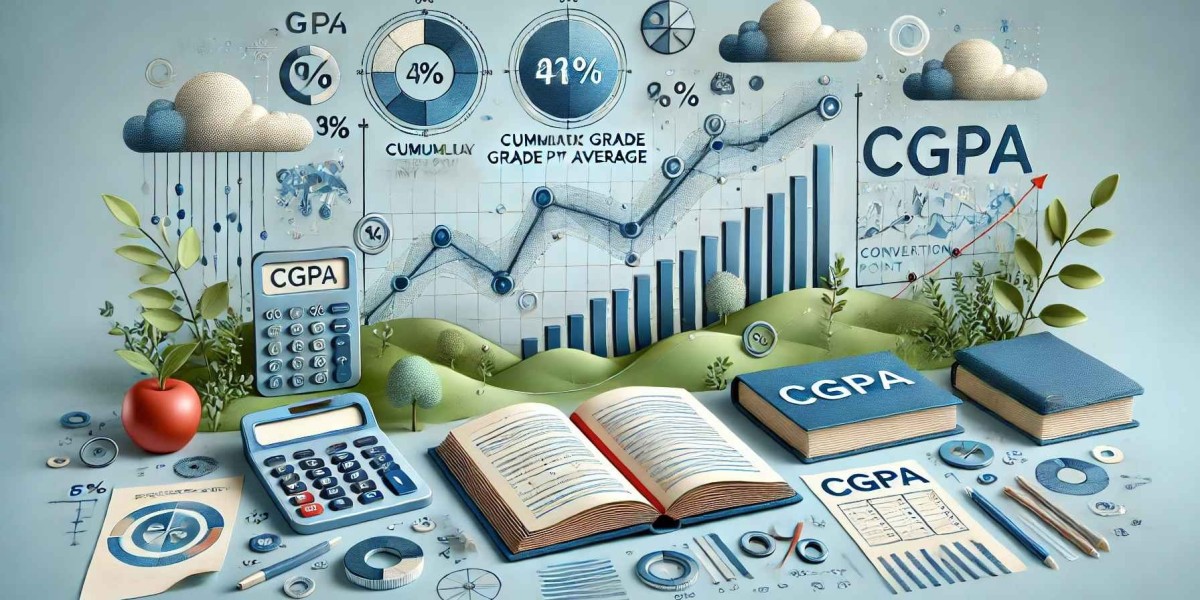In today's academic world, evaluating student performance through grading systems is essential for educational institutions. One such widely-used metric is CGPA or Cumulative Grade Point Average. CGPA is designed to represent a student’s overall academic achievements across multiple subjects, semesters, or years. Understanding CGPA and its calculation process can help students, educators, and employers interpret academic performance better.
What is CGPA? A Detailed Overview
In India and several other countries, CGPA is commonly based on a 10-point scale, where students are assigned points from 0 to 10 based on their scores. Other systems, like the US grading system, use a 4-point scale for CGPA. Both methods serve the same purpose: to represent academic achievements in a simplified, easily comparable form.
How is CGPA Calculated? A Step-by-Step Guide
Calculating CGPA is relatively straightforward, though the formula may vary slightly based on the educational institution. Here’s a step-by-step guide to calculating CGPA:
Gather Subject Grade Points: For each subject or course, note the grade point assigned based on the student’s score. For example, on a 10-point scale, scores may be translated into grade points from 0 to 10.
Sum All Grade Points: Add the grade points for all the subjects taken during the semester, year, or entire course.
Divide by the Number of Subjects: To find the CGPA, divide the total grade points by the number of subjects.
Example Calculation:
If a student has the following grades in five subjects:
- Subject 1: 9
- Subject 2: 8
- Subject 3: 7
- Subject 4: 9
- Subject 5: 8
CGPA = (9 + 8 + 7 + 9 + 8) / 5 = 8.2
Thus, the CGPA in this example is 8.2 on a 10-point scale.
Note: Some institutions round off the final CGPA, while others may keep it in decimal form.
CGPA vs. GPA: What’s the Difference?
Though CGPA (Cumulative Grade Point Average) and GPA (Grade Point Average) are often used interchangeably, there are differences:
- CGPA considers the overall performance across multiple semesters or an entire academic course, representing a cumulative average.
- GPA, however, often represents the grade point average for a single term or semester.
Why is CGPA Important? Understanding Its Role in Academia
CGPA plays a crucial role in academic evaluation and impacts several aspects of a student’s educational and professional journey:
Higher Education Opportunities: Many universities require a minimum CGPA for admission into advanced programs. A higher CGPA can improve a student’s chances of acceptance into prestigious institutions for higher studies.
Scholarships and Grants: Scholarships often have minimum CGPA requirements, and students with higher CGPAs may qualify for merit-based scholarships, which can significantly reduce educational costs.
Employment and Career Opportunities: In fields such as consulting, finance, and technology, employers may require a minimum CGPA. A strong CGPA is frequently viewed as a measure of a candidate's dedication, consistency, and knowledge.
Self-Evaluation for Students: CGPA helps students monitor their academic progress, allowing them to identify strengths and areas for improvement.
CGPA, therefore, serves as a universal indicator of academic performance, providing a clear, comparable measure for educational institutions, employers, and students alike.
How to Convert CGPA to Percentage: A Useful Tool for Students
Formula for CGPA to Percentage Conversion
The most commonly used formula for converting CGPA to percentage is:
Percentage=CGPA×9.5\text{Percentage} = \text{CGPA} \times 9.5
For instance, if a student’s CGPA is 8.2, the percentage calculation would be:
8.2×9.5=77.9%8.2 \times 9.5 = 77.9\%
Using Online CGPA to Percentage Converters
Instead of manually calculating, students can use an online CGPA to percentage converter. These tools offer quick, accurate conversions and are beneficial for students needing to submit their scores in percentage form for applications or job opportunities.
Advantages and Limitations of CGPA System
While CGPA offers several benefits, such as simplified grading and cumulative evaluation, it also has limitations:
Advantages of CGPA
- Holistic Evaluation: CGPA provides a broad view of student performance across all subjects.
- Simplified Grading: The CGPA system is easier for schools to manage and is often easier for students to understand.
- Encourages Consistency: Since CGPA measures cumulative performance, it encourages students to maintain consistent scores across all subjects.
Limitations of CGPA
- Lacks Subject-Specific Insights: CGPA does not reveal a student's performance in individual subjects, potentially hiding weaknesses.
- Grade Inflation Risk: Averaging grades can lead to inflated results, which may not accurately reflect a student's capabilities.
- Inconsistency Across Institutions: CGPA scales and grading methods vary, making it challenging to compare CGPAs across different institutions or countries.
Tips for Students to Improve Their CGPA
- Identify Weak Areas: Focus on subjects where your scores are lower, and devote additional time to improve in those areas.
- Stay Consistent: To achieve a high CGPA, students should maintain consistent performance across subjects rather than excelling in one and underperforming in another.
- Utilize Resources: Seek guidance from teachers, online resources, or tutoring for subjects where improvement is needed.
- Effective Time Management: Organizing study schedules and balancing academic and personal time are key to long-term success.
By following these strategies, students can work towards improving their CGPA, which in turn can help open doors to academic and career opportunities.
Conclusion
Understanding CGPA is fundamental for students aiming to assess their academic performance accurately. From its calculation to its impact on higher education, scholarships, and career opportunities, CGPA serves as a valuable metric in the education system. Additionally, knowing how to convert CGPA to percentage can help students present their achievements in formats preferred by institutions and employers.
In conclusion, CGPA is a comprehensive grading metric that helps students, institutions, and employers gauge academic performance. By improving CGPA, students can enhance their educational experience and increase their eligibility for advanced academic and career opportunities.









